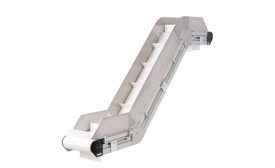Automated Assembly Systems
New technology is making vision systems faster, more reliable and easier to use.
Read More
Industry 4.0: Myths vs. Reality
Digital convergence is ushering in a new era of smart factories.
November 3, 2016
Automated Processing of Small RF and Coax Cables
Ultra-miniature RF cable assemblies require special equipment for cutting, stripping and crimping.
October 4, 2016
The ASSEMBLY Show Preview
Some 270 exhibitors will display the latest technologies at this year’s ASSEMBLY Show.
October 3, 2016
Innovative Conveyors Maximize Use of Space
New conveyor technologies are giving plant managers more options to make better use of existing space.
September 8, 2016
Bullet-Proof Automated Assembly
A system that runs like clockwork doesn’t happen by accident.
September 8, 2016
Never miss the latest news and trends driving the manufacturing industry
Stay in the know on the latest assembly trends.
JOIN TODAY!Copyright ©2024. All Rights Reserved BNP Media.
Design, CMS, Hosting & Web Development :: ePublishing











